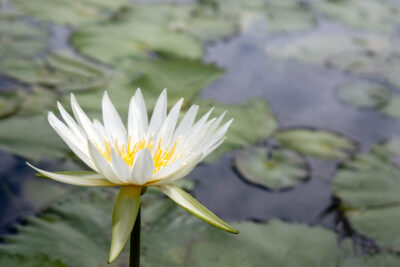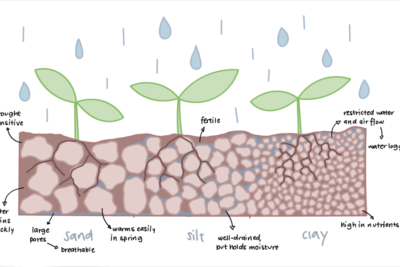
Understanding Translucent Leaves: A Healthy Indicator for Succulents?

Succulents have gained immense popularity in recent years for their unique and captivating appearance. These plants, known for their thick and fleshy leaves, have become a favorite among plant enthusiasts and interior decorators alike. However, one common phenomenon that often raises concern among succulent owners is the appearance of translucent leaves. While some may see this as a sign of poor health or disease, understanding the reasons behind translucent leaves can help dispel any worries and ensure the well-being of these beloved plants.
We will explore the phenomenon of translucent leaves in succulents and delve into the possible causes behind it. We will discuss the natural characteristics of succulents that contribute to their translucent appearance, such as their water storage abilities and unique leaf structures. Additionally, we will examine the role of light exposure, watering practices, and nutrient deficiencies in causing translucent leaves. By understanding these factors, succulent owners can better assess the health of their plants and make informed decisions to maintain their vibrant and thriving foliage.
- Translucent leaves can indicate that a succulent is getting enough sunlight
- One solution is to provide more indirect light to prevent leaves from becoming translucent
- Another solution is to move the succulent to a spot with less intense sunlight
- Watering the succulent properly can also help prevent translucent leaves
- Overwatering can cause leaves to become translucent, so it's important to water sparingly
- Adjusting the watering schedule and allowing the soil to dry out between watering can help
- Translucent leaves can also be a sign of nutrient deficiency, so fertilizing the succulent may be necessary
- Using a balanced, succulent-specific fertilizer can help restore the health of the plant
- Finally, checking for pests and treating any infestations can prevent translucent leaves caused by insect damage
- Frequently Asked Questions
Translucent leaves can indicate that a succulent is getting enough sunlight
Translucent leaves on succulents are a fascinating phenomenon that can provide valuable insights into the health and well-being of these unique plants. Succulents, known for their ability to store water in their leaves, have developed various adaptations to thrive in arid environments. One such adaptation is their ability to become translucent under certain conditions, indicating that they are receiving adequate sunlight.
When a succulent's leaves become translucent, it means that light is effectively penetrating through the leaf tissues, allowing photosynthesis to occur. Photosynthesis is the process by which plants convert light energy into chemical energy, fueling their growth and survival. Therefore, the presence of translucent leaves suggests that the succulent is receiving enough sunlight to meet its energy requirements.
Translucency in succulent leaves is often most noticeable in species with thick, fleshy leaves. These leaves have a higher water content, which allows light to pass through more easily. The translucent appearance is a result of the combination of water-filled cells and the structure of the leaf tissues.
It's important to note that while translucent leaves can be a positive sign for succulents, it does not necessarily mean that they should always be completely transparent. Each succulent species has its own unique characteristics, and some may naturally have more opaque leaves than others. It's crucial to observe the overall health and growth of the plant in conjunction with leaf translucency to determine its well-being.
 Cacti and Succulents: A Comprehensive Book Guide
Cacti and Succulents: A Comprehensive Book GuideWhat causes leaves to become translucent?
The primary factor that causes leaves to become translucent is sunlight. Succulents, being native to sunny and dry regions, have adapted to maximize their exposure to sunlight. When a succulent receives ample sunlight, it triggers physiological changes within the leaf cells, making them more transparent. This transparency allows the chlorophyll, the pigment responsible for photosynthesis, to absorb light more efficiently.
In addition to sunlight, other factors such as proper watering and nutrient availability also play a role in leaf translucency. Succulents need a delicate balance of water and nutrients to thrive, and an imbalance can affect their overall health. Overwatering or inadequate drainage can lead to waterlogged leaves, reducing their translucency. Similarly, nutrient deficiencies can hinder the plant's ability to produce chlorophyll, resulting in less translucent leaves.
How to maintain healthy translucent leaves in succulents?
Maintaining healthy translucent leaves in succulents requires providing them with optimal growing conditions. Here are some tips to ensure your succulents have vibrant and translucent leaves:
- Provide Adequate Sunlight: Place your succulents in a location where they can receive at least six hours of direct sunlight per day. South-facing windows or outdoor areas with ample sunlight are ideal.
- Water Properly: Succulents prefer well-draining soil to prevent waterlogged roots. Water your succulents thoroughly but allow the soil to dry out between waterings. Avoid overwatering, as it can lead to root rot and affect leaf translucency.
- Ensure Proper Nutrition: Use a balanced succulent fertilizer to provide essential nutrients. Follow the instructions on the fertilizer packaging and avoid overfertilizing, as it can cause leaf burn and affect leaf translucency.
- Monitor Leaf Health: Regularly inspect your succulent's leaves for signs of damage, pests, or diseases. Remove any damaged leaves promptly to prevent further issues.
By following these guidelines, you can help your succulents maintain healthy and translucent leaves, ensuring their optimal growth and vitality.
One solution is to provide more indirect light to prevent leaves from becoming translucent
Translucent leaves in succulents can often be a cause for concern among plant enthusiasts. These semi-transparent or "see-through" leaves are an indication that something might be amiss with the health of the plant. However, understanding the underlying causes and addressing them effectively can help ensure healthy growth and vibrant foliage.
One common reason for translucent leaves in succulents is excessive exposure to direct sunlight. While succulents are known for their ability to thrive in bright light conditions, prolonged and intense exposure to direct sunlight can lead to leaf damage. The intense rays of the sun can cause the leaves to become translucent as they are unable to handle the excessive light. This is especially true for succulents that are accustomed to lower light conditions or have been recently moved from indoor to outdoor environments.
 Discover the Fascinating Foliage Patterns of the Snake-Like Succulent!
Discover the Fascinating Foliage Patterns of the Snake-Like Succulent!To address this issue, it is essential to provide more indirect light to these succulents. Placing them in a location where they receive bright, filtered light or partial shade can prevent the leaves from becoming translucent. This can be achieved by placing them near a sheer curtain or providing them with some shade during the hottest parts of the day.
Another factor that can contribute to translucent leaves in succulents is overwatering. Succulents are adapted to survive in arid environments and have specialized water storage tissues that allow them to withstand periods of drought. However, excessive watering can lead to root rot and hinder the plant's ability to absorb water properly. As a result, the leaves may become translucent due to waterlogged tissues.
To prevent overwatering and ensure proper hydration, it is important to follow a watering schedule that allows the soil to dry out between watering sessions. Succulents generally prefer infrequent but deep watering, allowing the soil to completely dry out before watering again. Additionally, using well-draining soil and pots with drainage holes can help prevent waterlogging and maintain the health of the succulent.
It is worth noting that translucent leaves can also be a natural characteristic of certain succulent species. Some succulents, such as the Haworthia cooperi or the Graptoveria 'Opalina,' naturally have translucent leaves as part of their growth pattern. In such cases, if the plant appears healthy otherwise, the translucent leaves are not a cause for concern.
Overall, understanding the causes of translucent leaves in succulents and taking appropriate measures can help ensure the health and vitality of these plants. Providing more indirect light, avoiding overwatering, and selecting suitable succulent species can all contribute to maintaining vibrant and non-translucent foliage.
Another solution is to move the succulent to a spot with less intense sunlight
Translucent leaves in succulents can often be an indication of excessive sunlight exposure. When succulents are exposed to intense sunlight for long durations, their leaves may become translucent, appearing almost see-through. This is because the leaves are trying to protect themselves from the harsh rays of the sun.
 Comparing Sizes: A Guide to the Different Sizes of Succulents
Comparing Sizes: A Guide to the Different Sizes of SucculentsIf you notice that your succulent's leaves are becoming translucent, one solution is to move the plant to a spot with less intense sunlight. This could be a shady area or a location where the succulent receives indirect sunlight. By providing the plant with a more suitable light environment, you can help prevent further damage to its leaves.
It's important to note that different succulent species have varying light requirements. Some succulents thrive in direct sunlight, while others prefer more shade. Therefore, it's crucial to research the specific light needs of your succulent and find an appropriate location accordingly.
Here are a few tips to consider when determining the ideal light conditions for your succulent:
- Observe the succulent: Pay attention to how your succulent reacts to different light conditions. If you notice its leaves becoming translucent or showing signs of sunburn, it may be an indication that it needs to be moved to a less sunny spot.
- Experiment gradually: If you're unsure about the right amount of sunlight your succulent needs, try gradually acclimating it to different light conditions. Start by moving it to a slightly shadier location and monitor its response. If the leaves begin to regain their color and firmness, you'll know you've found a better spot for it.
- Consider the season: The intensity of sunlight varies throughout the year. During the summer months, the sun's rays are usually stronger, so it's wise to provide some shade for your succulent during this time. In contrast, during the winter months, when the sun is less intense, you may be able to expose your succulent to more direct sunlight without causing harm.
Remember, while translucent leaves can be an indicator of excessive sunlight exposure, it's essential to assess other factors such as watering, temperature, and overall plant health. By providing your succulent with the right amount of light and care, you can ensure its leaves remain vibrant and healthy.
Watering the succulent properly can also help prevent translucent leaves
Succulents are renowned for their ability to store water in their leaves, allowing them to thrive in dry and arid conditions. However, if you notice that your succulent's leaves are becoming translucent, it may be a sign of an underlying issue. One common cause of translucent leaves in succulents is overwatering.
When succulents receive too much water, their leaves can become waterlogged and lose their natural color and vibrancy. Over time, this excess moisture can cause the leaves to turn translucent, indicating that the plant is struggling to cope with the excess water. To prevent this from happening, it is crucial to understand how to water your succulents properly.
 Can Succulents Imitate the Appearance of a Human Brain?
Can Succulents Imitate the Appearance of a Human Brain?Here are some tips to ensure you water your succulents correctly:
- 1. Use the soak and dry method: Succulents prefer to be thoroughly watered and then allowed to dry out completely before watering again. This mimics their natural environment, where they experience periods of drought followed by heavy rainfall. Soak the soil thoroughly until water drains out of the pot's drainage holes, and then wait for the soil to dry out completely before watering again.
- 2. Understand your succulent's water requirements: Different succulent species have varying water needs. Some succulents, like cacti, require less frequent watering, while others may need more regular watering. Research the specific watering needs of your succulent species and adjust your watering schedule accordingly.
- 3. Provide adequate drainage: Succulents dislike sitting in waterlogged soil. Ensure that the pot you choose has drainage holes, allowing excess water to escape. Additionally, use a well-draining soil mix specifically formulated for succulents to prevent water from accumulating around the roots.
- 4. Observe the signs: Keep an eye on your succulent's leaves and overall appearance. If the leaves start to appear translucent or feel mushy to the touch, it's a clear indication of overwatering. Adjust your watering routine accordingly to prevent further damage.
By following these watering guidelines, you can help prevent the occurrence of translucent leaves in your succulent. Remember, striking the right balance between hydration and dryness is key to maintaining a healthy and vibrant succulent.
Overwatering can cause leaves to become translucent, so it's important to water sparingly
When it comes to caring for succulents, one of the most common mistakes that beginners make is overwatering. Overwatering can lead to various problems, including root rot and fungal diseases. But did you know that overwatering can also cause the leaves of succulents to become translucent?
Translucent leaves are a clear indicator that your succulent is being overwatered. This happens because excessive moisture in the soil causes the plant to absorb more water than it needs. As a result, the cells in the leaves become engorged with water, making them appear translucent or semi-transparent.
It's important to note that not all succulents have translucent leaves, and the degree of translucency can vary depending on the species. Some succulents may only show slight transparency, while others may become almost completely see-through. Regardless, if you notice any level of translucency in your succulent's leaves, it's a sign that you need to adjust your watering habits.
Why is it crucial to water sparingly?
Succulents have adapted to survive in arid environments by storing water in their leaves, stems, or roots. This water storage mechanism allows them to withstand long periods of drought. However, when succulents are overwatered, their water storage tissues become saturated, leading to root rot and other issues.
Watering sparingly is key to maintaining the health of succulents. It's important to allow the soil to dry out completely between waterings to prevent excessive moisture. The frequency of watering will depend on various factors, such as the climate, the type of succulent, and the size of the pot. Generally, it's recommended to water succulents thoroughly when the soil is completely dry, and then wait until it dries out again before watering.
 Discover the Stunning Resemblance: A Lettuce-Like Succulent
Discover the Stunning Resemblance: A Lettuce-Like SucculentSigns of overwatering in succulents
In addition to translucent leaves, there are other signs that can indicate your succulent is being overwatered. These signs include:
- Yellowing or wilting leaves: Overwatered succulents may develop yellow or wilted leaves, as the excess moisture disrupts the plant's ability to take up nutrients.
- Soft or mushy stems: When the stems of succulents become soft or mushy, it's a clear sign that they are being overwatered. This is a result of the cells in the stem becoming waterlogged and eventually rotting.
- Fungal growth: Excessive moisture creates the perfect environment for fungal growth. If you notice any mold, mildew, or fungus on your succulent's leaves or soil, it's a clear indication of overwatering.
By understanding the relationship between overwatering and translucent leaves in succulents, you can take the necessary steps to ensure the health and longevity of your plants. Remember, when it comes to watering succulents, less is always more!
Adjusting the watering schedule and allowing the soil to dry out between watering can help
One of the most important factors in maintaining healthy succulents is understanding their watering needs. Overwatering can lead to root rot and other diseases, while underwatering can cause the leaves to become shriveled and wilted.
One useful indicator of a succulent's water needs is the translucency of its leaves. Translucent leaves indicate that the plant is well-hydrated and receiving the right amount of water. On the other hand, opaque or dull leaves can be a sign of dehydration or overwatering.
To ensure that your succulents have the appropriate amount of water, it is recommended to adjust your watering schedule. Rather than watering on a fixed schedule, observe the condition of your succulents and water them only when the soil has completely dried out. This method mimics the natural environment of succulents, where they experience periods of drought followed by heavy rainfall.
When watering your succulents, make sure to thoroughly saturate the soil until water drains out of the bottom of the pot. This ensures that the roots receive enough moisture and prevents water from pooling around the roots, which can lead to root rot.
Additionally, it is important to choose the right type of soil for your succulents. Succulents thrive in well-draining soil that allows excess water to flow out easily. A mixture of cactus soil and perlite or pumice can provide the ideal growing medium for succulents.
 Exploring the Existence of Naturally Blue Succulents: Fact or Fiction?
Exploring the Existence of Naturally Blue Succulents: Fact or Fiction?Understanding the translucency of succulent leaves can serve as a valuable indicator of their hydration levels. Adjusting the watering schedule and allowing the soil to dry out between watering can help maintain the health of your succulents and prevent common issues such as root rot.
Translucent leaves can also be a sign of nutrient deficiency, so fertilizing the succulent may be necessary
When it comes to caring for succulents, one of the key factors to consider is the health of their leaves. While many succulents have thick and fleshy leaves, some species may develop translucent or semi-translucent leaves. This can be a natural characteristic of certain succulents, but it can also indicate an underlying issue with the plant's health.
One common cause of translucent leaves in succulents is a lack of proper nutrients. Succulents are known for their ability to thrive in harsh environments with minimal nutrients, but they still require some essential elements to maintain their health. When a succulent lacks these nutrients, its leaves may become translucent as the plant prioritizes the allocation of resources to more vital areas.
If you notice that your succulent's leaves are becoming more translucent, it may be a sign that the plant is lacking essential nutrients. In this case, fertilizing the succulent can help replenish these nutrients and promote healthy leaf growth. Using a balanced fertilizer specifically formulated for succulents and following the recommended dosage instructions can provide the necessary nutrients without overfeeding the plant.
It's important to note that while fertilizing can be beneficial, it should be done in moderation. Over-fertilizing can lead to nutrient burn, which can cause further damage to the succulent's leaves and overall health. Therefore, it's crucial to follow the fertilizing guidelines and avoid excessive use of fertilizers.
Additionally, it's essential to ensure that the succulent is receiving adequate sunlight and water. Insufficient sunlight can hinder the plant's ability to photosynthesize and produce essential nutrients. Similarly, overwatering can lead to root rot and nutrient deficiency as the excess water displaces the necessary nutrients from the soil.
 Air Plants vs Succulents: Differences and Similarities
Air Plants vs Succulents: Differences and SimilaritiesTranslucent leaves in succulents can be an indicator of nutrient deficiency. Fertilizing the plant with a balanced succulent fertilizer, alongside providing adequate sunlight and water, can help address the issue and promote healthy leaf growth. It's crucial to remember to fertilize in moderation and avoid overfeeding the succulent, as this can have adverse effects on its overall health.
Using a balanced, succulent-specific fertilizer can help restore the health of the plant
Translucent leaves in succulents are often seen as a healthy indicator of the plant's overall well-being. When a succulent's leaves appear translucent, it means that they are storing an ample amount of water, and the plant is thriving in its environment. However, it is essential to note that this phenomenon can also be a sign of an underlying issue that needs attention.
One common cause of translucent leaves in succulents is overwatering. When succulents receive more water than they need, their leaves can become waterlogged, causing them to turn translucent. This is because succulents are adapted to survive in arid conditions and are capable of storing water in their leaves, stems, and roots. Overwatering disrupts this natural balance and can lead to root rot and other fungal diseases.
To restore the health of a succulent with translucent leaves, it is crucial to address the underlying issue and provide the plant with the care it needs. One effective method is to adjust the watering schedule and allow the soil to dry out completely between waterings. This allows the succulent's roots to breathe and prevents the risk of root rot.
Another important aspect to consider is the type of fertilizer used for succulents. Using a balanced, succulent-specific fertilizer can help restore the health of the plant and promote the growth of vibrant, non-translucent leaves. These fertilizers are specially formulated to provide the necessary nutrients while avoiding excessive nitrogen, which can lead to weak growth and translucent leaves.
In addition to proper watering and fertilization, it is essential to ensure that succulents receive adequate sunlight. Succulents thrive in bright, indirect light, and insufficient light can cause their leaves to become elongated and translucent. Placing succulents near a sunny window or using artificial grow lights can help provide the light they need to maintain their vibrant colors and healthy foliage.
Overall, while translucent leaves can be a sign of a healthy succulent, it is crucial to understand the underlying causes and take appropriate measures to ensure the well-being of the plant. By adjusting watering practices, using a balanced fertilizer, and providing adequate sunlight, succulent enthusiasts can enjoy the beauty and vitality of their plants for years to come.
 Identifying and Recognizing Common Succulent Plants Guide
Identifying and Recognizing Common Succulent Plants GuideFinally, checking for pests and treating any infestations can prevent translucent leaves caused by insect damage
When it comes to caring for succulents, one common issue that many plant enthusiasts encounter is the presence of translucent leaves. These semi-transparent leaves can be a cause for concern, as they often indicate an underlying issue with the health of the plant. However, understanding the reasons behind translucent leaves and taking appropriate measures can help ensure the well-being of your succulents.
Possible Causes of Translucent Leaves
Translucent leaves in succulents can be caused by various factors. One of the main reasons is overwatering. Succulents have adapted to arid climates and are equipped to store water in their leaves. However, when they are exposed to excessive moisture, their leaves can become waterlogged, leading to a translucent appearance.
Another common cause of translucent leaves is inadequate sunlight. Succulents thrive in bright, indirect light, and insufficient light can result in weak, pale leaves that appear translucent. It's essential to provide your succulents with the appropriate amount of sunlight to prevent this issue.
Nutrient deficiencies can also contribute to the development of translucent leaves. Succulents require a well-balanced diet of essential nutrients to maintain their health. Lack of certain nutrients, such as nitrogen or iron, can cause the leaves to lose their vibrant color and become translucent.
Preventing and Treating Translucent Leaves
To prevent translucent leaves in your succulents, it's crucial to strike a balance between watering and allowing the soil to dry out properly. Succulents prefer well-draining soil, so make sure to provide adequate drainage and avoid overwatering. Additionally, ensure that your succulents are receiving enough sunlight, ideally at least six hours of bright, indirect light per day.
Regularly fertilizing your succulents with a balanced succulent fertilizer can help prevent nutrient deficiencies that contribute to translucent leaves. Follow the instructions on the fertilizer packaging to ensure you're providing the right amount of nutrients for your plants.
Finally, checking for pests and treating any infestations can prevent translucent leaves caused by insect damage. Common succulent pests, such as mealybugs or spider mites, can weaken the plant and cause its leaves to turn translucent. Use a mild insecticidal soap or neem oil to eliminate pests and protect your succulents.
 Are Mermaid Tail Succulents Real? A Care Guide for Enchanting Plants
Are Mermaid Tail Succulents Real? A Care Guide for Enchanting PlantsBy understanding the causes of translucent leaves and taking proper preventive measures, you can ensure that your succulents remain healthy and vibrant. Regularly monitoring their care, providing adequate light and water, and addressing any potential issues promptly will help your succulents thrive and display their stunning beauty.
Frequently Asked Questions
1. What does it mean if the leaves of my succulent are translucent?
Translucent leaves in succulents are usually a sign of overwatering. It means the leaves are retaining excess water and becoming semi-transparent.
2. Are translucent leaves always a sign of a healthy succulent?
No, translucent leaves are not a healthy indicator for succulents. It usually indicates an issue like overwatering or lack of sunlight, which can harm the plant if not addressed.
3. How can I fix translucent leaves on my succulent?
To fix translucent leaves, you should reduce watering and ensure the succulent is getting enough sunlight. Allow the soil to dry out completely between waterings and provide adequate light for the plant.
4. Can translucent leaves be a sign of disease or pest infestation?
Yes, in some cases, translucent leaves can indicate a disease or pest infestation. It's important to inspect the plant closely for any signs of pests or diseases and take appropriate measures for treatment.
If you want to read more articles similar to Understanding Translucent Leaves: A Healthy Indicator for Succulents?, you can visit the Identification category.






You Must Read